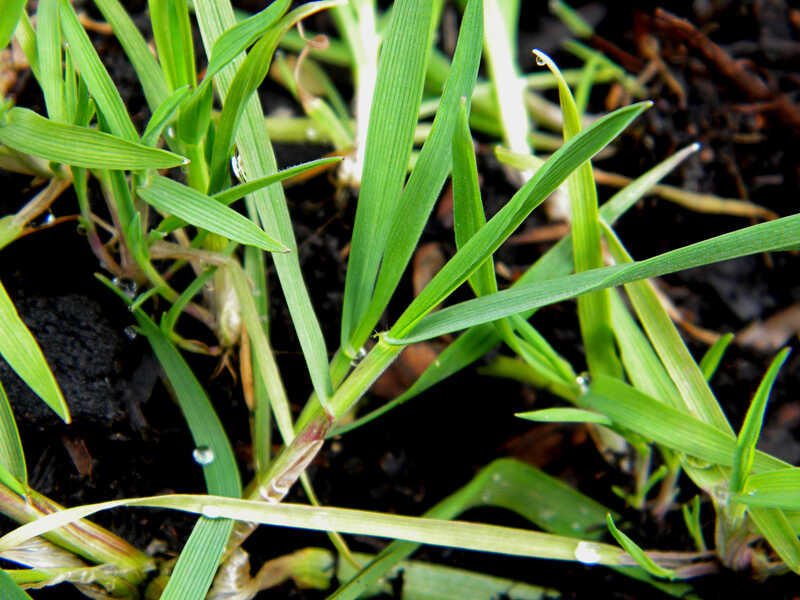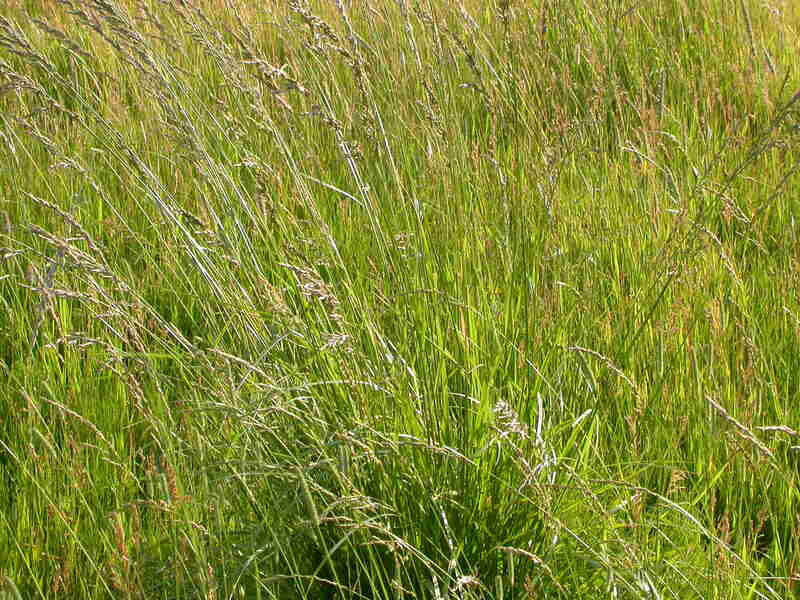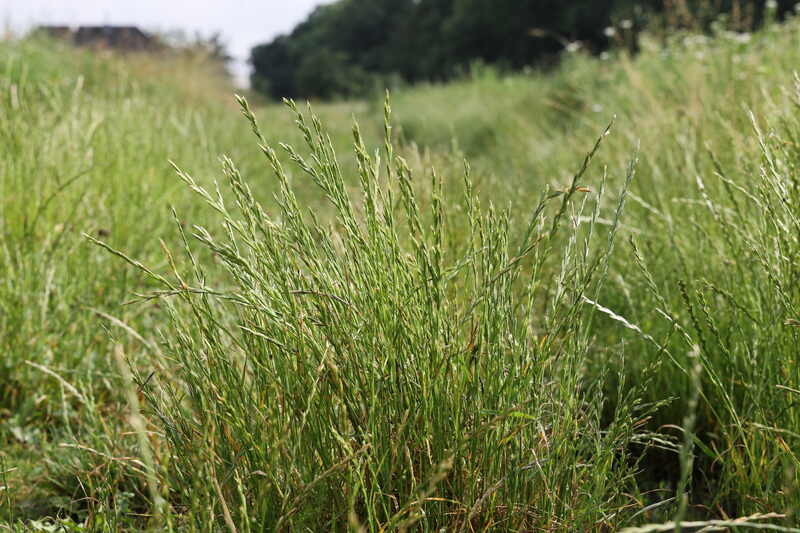4 Best Grass Types for Seattle
BY LASHONDA TUCKER | MARCH 25TH, 2023 | LAWN CARE, SEATTLE, WASHINGTONTo survive in Seattle, you must tolerate its high humidity. The same rule applies to your turfgrass. After enjoying the wooded trails in Discovery Park and communing with native plants that thrive in Seattle’s maritime climate, you probably want to return home to a yard that is just as adaptable to the weather. That’s why we’ve gathered the four best grass types that thrive in Seattle’s dry summers, wet winters, and overall humid and rainy conditions.
Whether you have a yard with a lot of shade or you prefer a low-maintenance grass, you’ll find grass with properties that work best for your home and lifestyle.
Warm-Season vs. Cool-Season Grasses
When choosing a grass type for your lawn, your options include warm-season grasses and cool-season grasses. Here in Seattle, you’ll have the most success with cool-season grass.
Warm-season grasses thrive when temperatures are warm and enter dormancy from late autumn through early spring as temperatures cool. Cool-season grasses grow best in climates with cool to mild weather, when temperatures are between 60 and 75 degrees Fahrenheit. While warm-season grass is green in summer, you can expect your cool-season grass to be brown and dormant in summer.
4 Cool-Season Grasses for Seattle
Cool-season grasses are right at home in Seattle, where the warm season is only about three months long. These grasses will survive their summer dormancy during Seattle’s average daily high of 72 degrees and they’ll withstand the winter chills too.
Cool-season grasses enter their green up period in early spring, enter dormancy in summer, return to green in autumn, and enter winter dormancy if soil temperatures consistently fall below 45 degrees Fahrenheit.
Let’s take a close look at the 4 best cool-season grasses for your Seattle yard:
1. Fine Fescue

Photo Credit: Bildoj / Wikimedia Commons / CC BY-SA 3.0
Fine fescue is a Seattle favorite. It begins growing early and blends well with other grass types. So if you’re overseeding an existing lawn or filling in blank patches, fine fescue is a good choice. It’s also great if you don’t mind standing out a bit–– It has a blue-green tint and can also have a green color lighter than other grasses.
As the most shade-tolerant of all the cool-season grasses, fine fescue is an ideal choice for properties with a lot of trees or don’t get a lot of sun. If that sounds like your home, the chewings variety will be the best option, as it is the most shade-tolerant fine fescue species.
Fine fescue’s fine texture provides a soft cushion for somersaults and tumbles, but its traffic tolerance is low to moderate. It can withstand a few walks across the grass, but it won’t tolerate routine soccer or baseball games in the yard.
If you enjoy an impressive lawn without a lot of work, you’ll appreciate fine fescue’s low fertilizer, mowing, and watering requirements.
Classification: Cool-season grass
Spreads by: Creeping red fescue spreads by rhizomes, while other fine fescues are bunch-type grasses, such as chewing, hard, and sheep fescues.
Shade tolerance: Moderate to High, depending on species
Drought tolerance: Moderate to High, depending on species
Foot traffic tolerance: Low to Moderate, depending on species
Maintenance needs: Low fertilizer and mowing needs.
Mowing height: Set mowing height between 2.5 and 4.0 inches, depending on species.
Potential for disease: Moderate. Common diseases include red thread, leaf spot, dollar spot, summer patch, and powdery mildew.
Soil pH: 6-6.5
Soil type: Will not perform well in wet soil conditions. Prefers drier soils and tolerates a wide range of soil types and fertility.
Other notes: Fine fescue has many different fine-textured species. The most commonly used varieties are chewings fescue, hard fescue, sheep fescue, creeping red fescue, and slender creeping red fescue.
2. Tall Fescue

Photo Credit: Matt Levin / Flickr / CC BY-SA 2.0
Tall fescue grass distinguishes itself from other grass types with its wide leaves. It has a dark green, glossy color. It thrives in Seattle’s climate of short, dry summers and wet winters because it’s drought-tolerant and well-adapted to cold, heat, and shade.
Tall fescue requires frequent mowing and needs plenty of water to prevent damage and stress during long dry spells. But its moderate to high drought tolerance means that when it’s not drought season, you won’t have to water it as often as some other grasses, like perennial ryegrass.
If you like walking barefoot, you may want to stay clear of this coarsely-textured grass type. With its moderate foot-traffic tolerance, it’s also not the optimal choice for frequent lawn parties or regular games of hide-and-seek.
Classification: Cool-season grass
Spreads by: Produces short rhizomes but has a bunch-type growth habit
Shade tolerance: Moderate
Drought tolerance: Moderate to High
Foot traffic tolerance: Moderate
Maintenance needs: Frequent mowing. Does not produce significant thatch.
Mowing height: Set mowing height to 2 inches when the grass reaches 3 inches tall.
Potential for disease: Tolerant of most diseases when properly maintained.
Soil pH: 5.5-6.5
Soil type: Adapted to a wide range of soil conditions, but prefers fertile clay soils with good drainage.
Other notes: Grows vigorously in spring and fall. Stays green during winter months, depending on species. Falcon, Houndog, and Olympic are some of the varieties that retain green color year round.
3. Perennial Ryegrass

Photo Credit: T. Kebert / Wikimedia Commons / CC BY-SA 4.0
Now, perennial ryegrass is the grass for those who like to entertain outdoors. With its high foot-traffic tolerance, children can run and play as often as they like. Its fine texture means somersaults and tumbles are welcome, as the grass provides a soft landing. If your lawn is home to children sliding into third base a few days a week, you’ll love perennial ryegrass.
This grass has more wear resistance than other grasses adapted to the greater Seattle area. It also mixes well with other grass types like Kentucky bluegrass, bentgrasses, and fine fescues. If you’re in the middle of establishing a lawn and run out of bentgrass seeds, you can always finish off with perennial ryegrass and still end up with a beautiful yard. Compared to fine fescue and tall fescue, it requires moderate maintenance.
Perennial ryegrass is distinguishable by its reddish-purplish colored stem base. Its blades have a rich green color with a glossy look on one side of the leaf. A lawn with lots of sunlight is a good home for perennial ryegrass.
Classification: Cool-season grass
Spreads by: Has a bunch-type growth habit
Shade tolerance: Low
Drought tolerance: Low
Foot traffic tolerance: High
Maintenance needs: Moderate mowing and fertilization requirements. Thatch is not significant.
Mowing height: Set mowing height to 1.5 to 2.5 inches
Potential for disease: High. Common diseases include gray leaf spot, red thread, and leaf spot/melting-out.
Soil pH: Can grow in soils with a pH between 5 and 8, but prefers between 6 and 7.
Soil type: Prefers good drainage and fertility, but can tolerate some poor drainage.
Other notes: It germinates quickly, which helps with weed containment. Mixing it with Kentucky bluegrass makes it more traffic-resistant and disease-resistant. (It’s recommended that Kentucky bluegrass be used only as a mixture with other grasses for the western Washington area. Seattle homeowners are advised not to use Kentucky bluegrass as monostands, meaning it should not be planted as the only grass type).
4. Colonial Bentgrass
Colonial bentgrass stands out with its light green color and dense covering. It grows best on properties with partial shade that allow the grass to take advantage of the morning sun and the shade in the afternoon.
If you like spending time outside and working in the yard, this cool-season grass may be best for you. It requires mowing at least once a week, needs frequent dethatching and watering, and has high fertilizer needs.
As colonial bentgrass sunbathes in the morning, you may want to join it. It has a welcoming soft texture and can withstand average traffic, but it won’t tolerate heavy wear. In other words, it’s not the best choice for regular badminton challenges.
Classification: Cool-season grass
Spreads by: Short rhizomes that may bring about short stolons
Shade tolerance: Moderate
Drought tolerance: Low
Traffic tolerance: Low
Maintenance needs: Moderate to high. Best when mowed short, at least once weekly.
Mowing height: Set the mowing height between 0.5 and 1 inch.
Potential for Disease: Moderate. Susceptible to Fusarium patch in the winter. Vulnerable to Take-all patch when young but severity decreases as turf develops.
Soil pH: 5.5-6.5
Soil type: Tolerates poor soil conditions, but prefers moist and fertile soil.
Other Notes: Highland Colonial Bentgrass is a cultivar that’s slightly more heat and drought-tolerant.
FAQ About Seattle Grass Types
When is the best time to plant grass in Seattle?
It’s best to plant between April and May. This allows the grass to flourish while it’s still cool. The next best time to plant is in the fall up until mid-October. Summer planting is not advised.
What are the most common cool-season grasses?
Fine fescue, perennial ryegrass, tall fescue, and Kentucky bluegrass are among the most common cool-season grasses. They are usually mixed.
When should I fertilize my Seattle lawn?
If you need to fertilize, do so in mid-May. Use an organic fertilizer between September and October if you find you need to fertilize in the fall. Alternatively, you can apply a slow-release fertilizer in the fall up until November.
What are the best grass types for Washington State?
The best grass types for Washington State include:
- Kentucky bluegrass
- Perennial ryegrass
- Fine fescue
- Tall fescue
- Colonial bentgrass
Choosing Plant and Grass Varieties for Your Seattle Landscape
Being located west of the Cascades, Seattle experiences the humidity and cool temperatures of the Pacific Northwest. Fungal lawn disease spreads in this type of climate. It’s best to select grasses that have a natural immunity to the diseases that thrive in these conditions, like perennial ryegrass.
You’ll also want a grass that fits your property’s demographics. If you have a lot of shade, perennial ryegrass is not your best option, no matter how disease-resistant it is. You’ll want to gravitate towards fine fescue varieties.
If you have children, perennial ryegrass’s soft texture and high traffic tolerance will provide the ideal surface for kickball games and tag.
And remember, you can always mix grasses to make your lawn more sunny, shade, or traffic-tolerant. And to maintain its health and beauty, contact a Seattle lawn care professional who will keep your yard manicured and inviting.
Main Image Credit: Wonderlane / Flickr / CC0 1.0